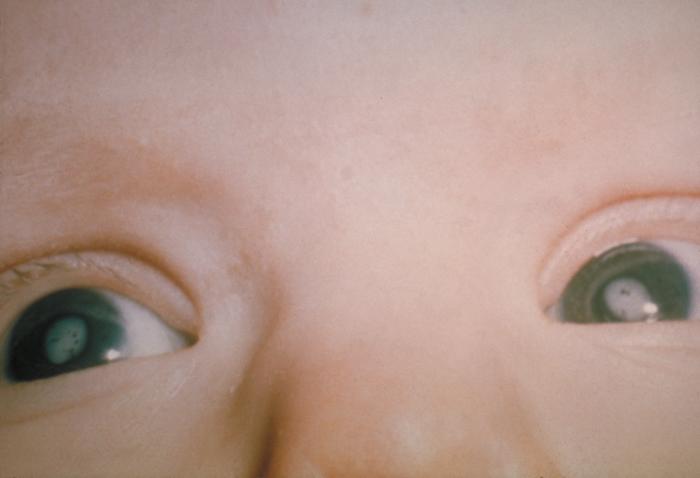Congenital Rubella Syndrome

Congenital rubella syndrome (CRS) can occur in a developing fetus of a pregnant woman who has contracted rubella, usually in the first trimester. If infection occurs 0–28 days before conception, the infant has a 43% risk of being affected. If the infection occurs 0–12 weeks after conception, the risk increases to 81%. If the infection occurs 13–26 weeks after conception, the risk is 54% of the infant being affected by the disease. Infants are not generally affected if rubella is contracted during the third trimester, or 26–40 weeks after conception. Problems rarely occur when rubella is contracted by the mother after 20 weeks of gestation and continues to disseminate the virus after birth.
It was discovered in 1941 by Australian Norman McAlister Gregg.
Signs and symptoms



The classic triad for congenital rubella syndrome is:
- Sensorineural deafness (58% of patients)
- Eye abnormalities—especially retinopathy, cataract, glaucoma, and microphthalmia (43% of patients)
- Congenital heart disease—especially pulmonary artery stenosis and patent ductus arteriosus (50% of patients)
Other manifestations of CRS may include:
- Spleen, liver, or bone marrow problems (some of which may disappear shortly after birth)
- Intellectual disability
- Small head size (microcephaly)
- Low birth weight
- Thrombocytopenic purpura
- Extramedullary hematopoiesis (presents as a characteristic blueberry muffin rash)
- Enlarged liver
- Small jaw size
- Skin lesions
Children who have been exposed to rubella in the womb should also be watched closely as they age for any indication of:
- Developmental delay
- Autism
- Schizophrenia
- Growth retardation
- Learning disabilities
- Diabetes mellitus
Prevention
Vaccinating the majority of the population is effective at preventing congenital rubella syndrome. For women who plan to become pregnant, the MMR (measles mumps, rubella) vaccination is highly recommended, at least 28 days prior to conception. The vaccine should not be given to women who are already pregnant as it contains live viral particles.
Other preventative actions can include the screening and vaccinations of high-risk personnel, such as medical and child care professions.